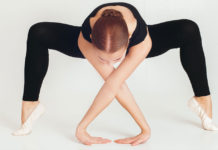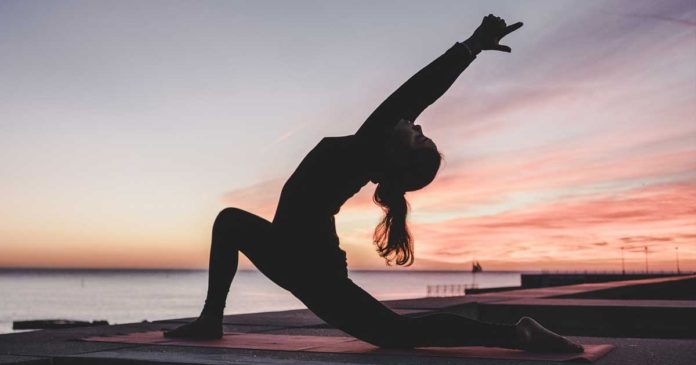Surya namaskar, “Salute to the Sun” or “Sun Salutation” is one of the most important Yoga practices. It is a set of 12 asanas or yoga poses which can be done with 12 mantras.
Surya namaskar is derived from the Sanskrit “Surya” or Sun and “Namaskar” which means salutations.
Every morning, specifically at dawn, the air is full of life energy or in Sanskrit “Prana Shakti”. If performed during the first rays of the sun while facing east, chanting mantras and practicing breathing techniques, one can feel the positive effects through mind, body, and spirit.
Practicing Surya namaskar is not just a cardiovascular exercise but will also have benefits for body and mind.
When performing Surya namaskar, one can reap the following benefits.
Benefits of Practicing Surya Namaskar (Sun Salutations):
Lose weight
At first, Surya namaskar might be tiring and slow, but as you practice it every day, your body will adjust. Furthermore, doing Surya namaskar faster will be a very good cardiovascular exercise for losing weight. It got asanas using your belly to help you lose belly fats faster and thus improving your metabolism.
Glowing skin
Performing Surya namaskar helps with your blood circulation; blood flows faster through your loosened blood vessels in your skin which can prevent early aging and wrinkles.
Good digestion
Just like your glowing skin, blood circulation in your digestive tract is also improved. Also, Surya namaskar have asanas which can help you release trap gas in your system.
Improved menstrual cycle
Performing Surya namaskar helps the regulation of your menstrual cycle. Surya namaskar have asanas that improve your abdominal muscles and help ease pain and even childbirth.
Brings down your sugar levels
Regular practice of Suryanamaskaras helps you bring down the levels of your sugar in your blood. By sweating, your body is releasing toxins in your body. You can also avoid various heart diseases.
Reduces Stress and Anxiety
Practicing Suryanamaskaras every day will not only improve yourself but also your mind. It helps you get rid of your anxiety, makes you calm down, and improves your memory and nervous system. Because it resets the functioning of your endocrine glands, Suryanamaskaras is very beneficial for people who suffer from thyroid illness.
Can cure insomnia
Many people say that Suryanamaskaras cures their insomnia; by making you calm and peaceful, it will give you the sleep you’ve always wanted.
Those are just some of the benefits if you are going to try Surya namaskar. Twelve Asanas As I said earlier, Surya namaskar has twelve asanas or postures.
Surya Namaskar (Sun Salutation) Poses:
Now let’s start with the first poses of Surya Namaskar or Paratham Asam:
Pramanasama
For you to start, stand in Tadasana “prayer hands, mountain pose.” Distribute your weight evenly on both feet, and establish the rhythm of your breathing.
Hasta Uttanasana
Then inhale, stretch your arms sideways, raise them over your head and go into Tadasana Urdhva Hastasana, “Mountain Pose, Arms Overhead”.
Padahastana
Exhale, empty your belly and fold your body into Uttanasana “Standing Forward Bend”. Keep your legs straight and your feet on the ground.
Ashwa Sanchalanasana
Now bring yourself to Anjaneyasana “Equestrian Pose”. Inhale a deep breath, get your left leg back up while keeping your right knee glued on the floor, and straighten your spine.
Dandasana
In this asana, breath in, bring yourself to Dandasana “Stick Pose” and straighten your body parallel to the ground.
Ashtanga Namaskara
Breath out, then bend your forehead, chest, and knees down on the floor into “Salute with eight parts or points” or Ashtanga Namaskara.
Urdhva Mukha Shvanasana
Keep your hands firmly on the ground, look up, and go into Bhujangasana “Cobra Pose”
Adho Mukha Svanasana
Now, exhale and lift your heel coming into Adho Muka Svanasana “Downward-Facing Dog” like an inverted V-shape. From this step onwards, you will just reverse the asanas from step 4 to the first asana.
Ashwa Sanchalanasana
To perform Ashwa Sanchalanasana, also known as High Lunge Pose, start in a standing position, step one foot forward into a lunge position, with the knee directly above the ankle, and extend the back leg straight, balancing on the ball of the foot, while reaching the arms overhead.
Padahastana
To perform Padahastasana, also known as Standing Forward Bend, start in a standing position, exhale and fold forward from the hips, reaching your hands towards your feet or the floor, keeping your legs straight. Keep a slight bend in the knees if needed, and focus on lengthening the spine and relaxing the neck.
Hasta Uttanasana
To perform Hasta Uttanasana, also known as Raised Arms Pose, start in a standing position, inhale and lift your arms up overhead, keeping them shoulder-width apart and palms facing each other. Gently arch your back, lengthening the spine, and hold the pose for a few breaths before returning to the starting position.
Pramanasama
To perform Pramanasama or Prayer Pose, stand tall with your feet together. Bring your palms together at the heart center and gently press them against each other, maintaining a tall and relaxed posture.
Here are the steps to perform Surya Namaskar:
Begin in Tadasana (Mountain Pose): Stand tall with your feet together, palms together at your heart center, and shoulders relaxed.
Inhale and raise your arms overhead, extending your spine and gently arching backward into Urdhva Hastasana (Upward Salute).
Exhale and fold forward from your hips into Uttanasana (Standing Forward Bend). Bend your knees if needed to reach the ground.
Inhale, step your right leg back into a lunge position, and bring your hands to the mat on either side of your left foot. Your left knee should be directly above your left ankle, forming a 90-degree angle. This is Ashwa Sanchalanasana (Low Lunge).
Exhale and step your left leg back into Adho Mukha Svanasana (Downward-Facing Dog). Press your palms into the mat, extend your arms, and lift your hips up and back. Form an inverted V shape with your body.
Inhale, shift your weight forward, and lower your knees, chest, and chin to the mat. This is Ashtanga Namaskara (Eight-Limbed Salutation). Keep your hips lifted and elbows close to your body.
Inhale, slide forward into Bhujangasana (Cobra Pose) or Urdhva Mukha Svanasana (Upward-Facing Dog). Straighten your arms, lift your chest, and roll your shoulders back.
Exhale, lift your hips, and press back into Adho Mukha Svanasana (Downward-Facing Dog).
Inhale, step your right foot forward between your hands, and come back to Ashwa Sanchalanasana (Low Lunge) on the other side.
Exhale, step your left foot forward to meet your right foot in Uttanasana (Standing Forward Bend).
Inhale, raise your arms overhead, and come back to Urdhva Hastasana (Upward Salute).
Exhale, bring your palms together at your heart center, and return to Tadasana (Mountain Pose).
Conclusion
Practicing Suryanamaskaras may give you benefits, but it still depends on you and your attitude to keep practicing them.
Want more tips about yoga, meditation and health? Visit more of our pages and learn more about yoga exercises and products!









